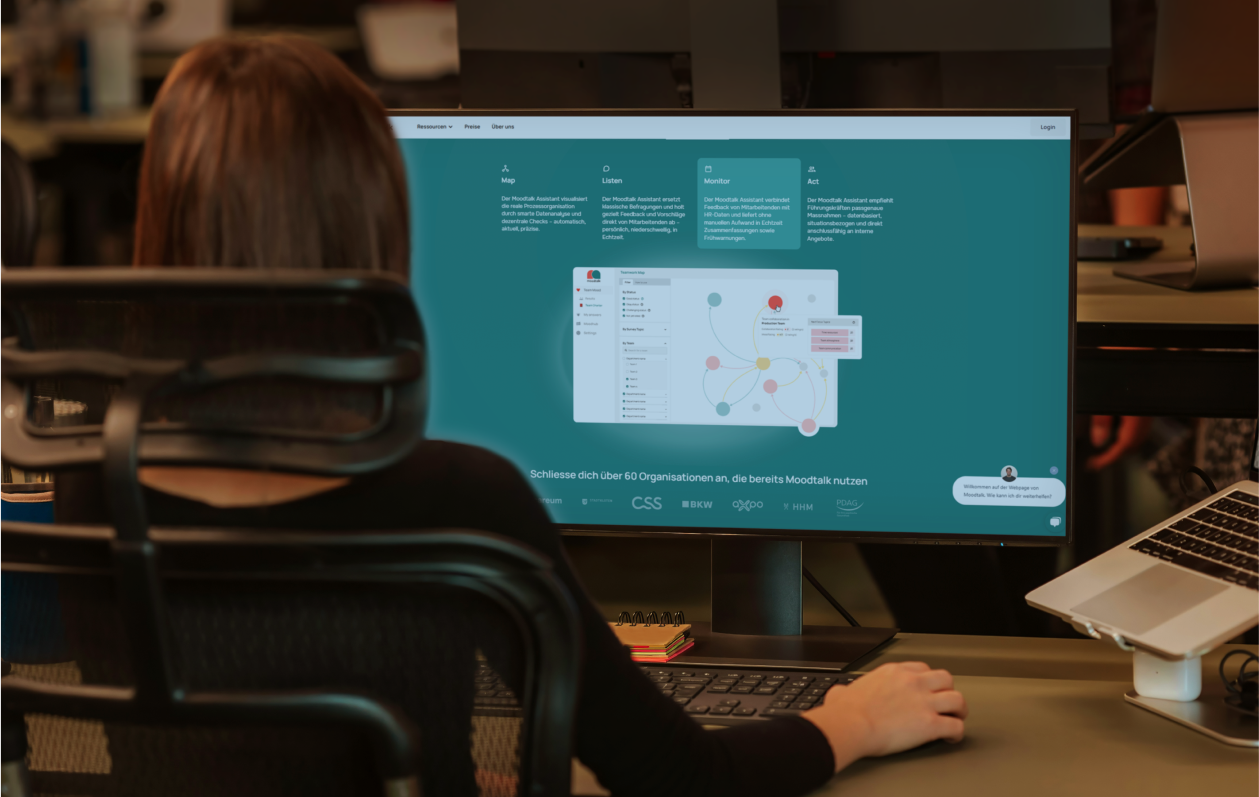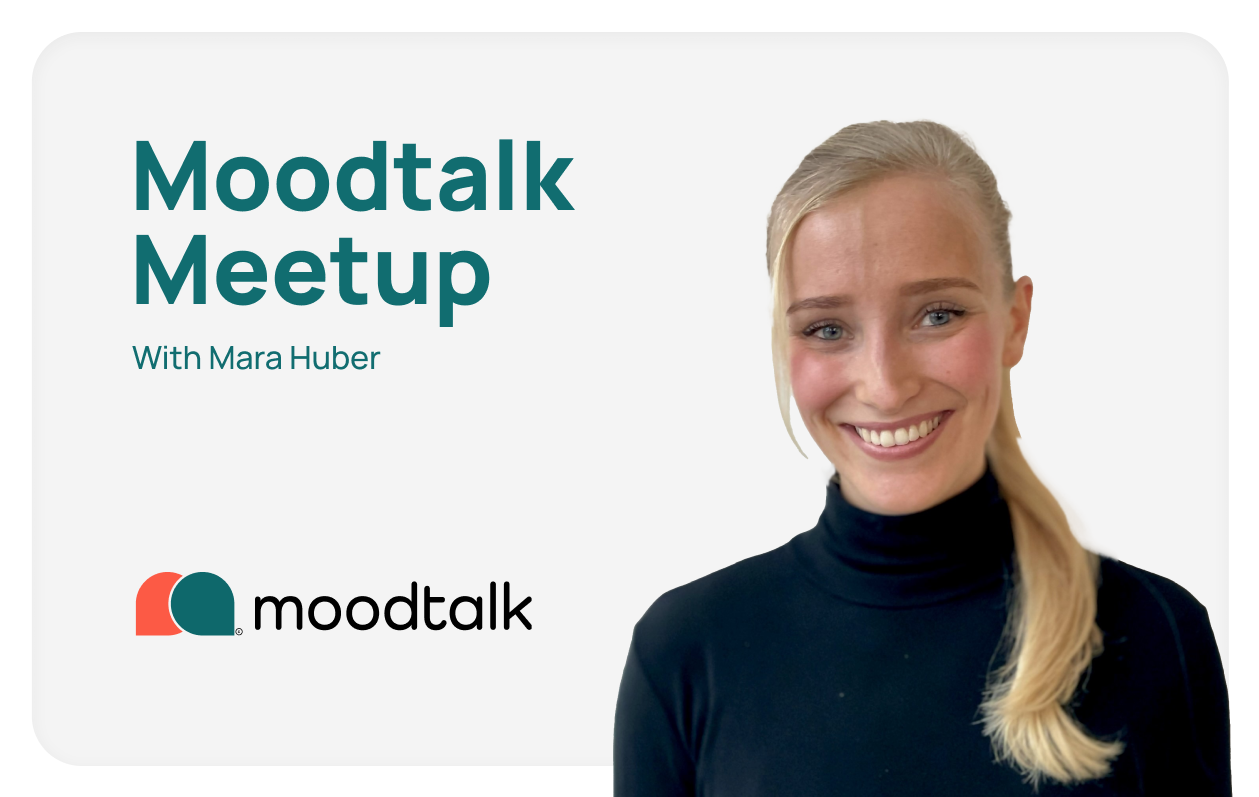In this blog series, we explore the topic of feedback from various perspectives and share practical examples.
A collaboration between Moodtalk and uma collective
What Is Feedback?
Simply and rationally summarized, feedback is a message a person receives about how they are perceived, what positive or negative impact they have, and how well they meet others’ expectations. Emotionally, feedback is much more complex—the individual perspective is crucial. As a sender or receiver of feedback, we take on different roles that individually require different conditions (Center for Strategic Leadership, 2016).
Productivity studies have shown that receiving feedback is essential for improving performance and motivation. Our LinkedIn survey found that 68% consider the feedback culture in their company good, yet feedback is still practiced far too little. Without feedback, we risk seeing things only from one perspective—our own. Openness to feedback is therefore essential for personal development and that of the company. The right feedback makes self-perception more realistic and empowers one to actively work on personal growth (Center for Strategic Leadership, 2016 | Bassot, 2016 | Moodtalk, 2022).
Every feedback recipient should be able to decide whether they want feedback or not—but at the same time, everyone should have the opportunity to address topics that affect collaboration. To meet both needs, a functioning feedback culture is necessary. 70% of Moodtalk users are convinced that feedback culture offers the greatest potential for improvement within their company. Detailed analysis shows that often there is no shared definition of how feedback should be given and that expectations within the team are not aligned (Neue Narrative, Newsletter Issue 85 | Moodtalk, 2022).
Expert Insights on the Biggest Challenges from the Community
Moodtalk User:
“I am tall and have a deep voice, which can come across as very intimidating. For me, this makes it challenging to create the right setting for giving feedback to my employees. Additionally, I often feel that many people don’t dare to discuss certain topics with me. Because of these factors, it is often difficult for me to establish the right closeness with the team.”
Expert Feedback from uma collective
Susan A. Wheelan describes in her book Creating Effective Teams that especially during initial encounters, people tend to unconsciously classify others and assign status based on external characteristics. Communication patterns and roles are quickly established at the beginning and need to be consciously broken apart. Regular and authentic check-ins* can help collaboratively define communication, empower all team members to find their place in the team, and accept each other. It’s worthwhile to jointly define feedback, practice it frequently, and try different methods—only in this way can the diverse needs be addressed and psychological safety be established in the long term.
A check-in invites every team member to be present, seen, and heard. All participants answer a question—whether in a meeting, a chat, or on a post-it. The important thing is that everyone responds. Here you’ll find inspiration for topic-specific check-in questions, or visit tschek.in or icebreaker.range for ideas or a random selection.
Moodtalk User:
“I gained leadership skills at a very young age. In my team, there are experienced members who are sometimes twice my age. In this team setting, it can happen that I am not taken seriously in certain situations and that my abilities are questioned because of my age. I wish for more input from like-minded peers to gain inspiration for my leadership style.”
Expert Feedback from Yannick Blättler, CEO at NEOVISO AG
Expert Feedback from Yannick Blättler, CEO at NEOVISO AG
For a long time, the natural progression was that leadership was left to the older generations. The experienced guided the younger and less experienced. As your example shows, this has drastically changed. While the reasoning may sound simple—that one is simply too young—during a leadership career, you will repeatedly find yourself questioned and have to justify your decisions confidently and sensibly. Of course, there are leadership personalities who can push through their decisions without opposition. However, these individuals often have a track record filled with great and successful decisions, so not every decision needs to be justified anymore. As a young person, this history is usually rather limited.
Nevertheless, I often remind myself as a managing director or board member of the unique advantages I bring to the table. These areas and strengths should be carefully reflected upon and written down during a quiet moment. After all, you also gained leadership skills at a young age. I would suggest asking yourself these three questions:
- What knowledge and skills do I bring as a young leader that can positively influence business development?
- Why should people want to work with me?
- What is my track record of success so far? (Even if it’s small or gained at other companies, write it down anyway.)
Additionally, it helps to remember that young leaders may approach things differently, but precisely for that reason, they bring a refreshing energy into the workday—something that is highly appreciated in the medium term. In the short term, decisions may be seen as changes that create extra effort for those affected. But in the long run, they will thank you for it.
Another important aspect is how to handle leadership situations concretely. It helps to strategically involve the older generations. Instead of making immediate decisions, I strongly recommend adopting an integrative approach. Either you gather the different opinions and communicate that you will evaluate them and return with a decision at the next meeting, or you have already made a decision and proactively explain why you chose not to follow the opinion of the older generation. I suggest addressing this immediately and arguing from a perspective of understanding. Take the viewpoint of the older generation and defend your statements with phrases like: “I understand that your preferred approach would have been XY,” or “From what I’ve perceived, you would have preferred to go in the direction of XY.” This shows them that you take their opinion seriously—and as a result, you will automatically be taken more seriously yourself.
What you must not forget: in intergenerational work, neither the older generations should forget the needs of the younger ones, nor vice versa. Therefore, it is very important that you also pay close attention to the needs of the older generations and include them. By doing so, you will earn even more respect.
As a final point, I recommend reflecting on and optimizing your communication style. Young leaders often come across as competent but not confident enough. It helps to seek feedback on how you present yourself in meetings, how you communicate with employees, how consistently you argue your points, and how responsibly you convey decisions. Here are some thoughts I always recommend:
- In Meetings:
- Greet everyone consciously as they enter the meeting room
- Speak louder rather than softly
- Highlight in the agenda which decisions are likely to lead to longer discussions
- Take notes
- In One-on-One Conversations:
- Try to understand the perspective of your conversation partner and take notes
- Ask specific questions if something is unclear
- In Everyday Work / In the Office:
- Talk to people: you need to become an absolute pro at small talk while always showing your appreciative and helpful mindset (leadership happens every moment)
- Show your enthusiasm in small moments: consciously point out generational differences and explain why we might approach certain topics differently in the future
- Never take yourself too seriously: leadership means being a servant to others
New Perspectives
We’ve gathered creative and exciting inputs to help you adopt new perspectives.
🧢 Feedback Hats
Six Thinking Hats is a book by Edward de Bono that describes a tool for team discussions and individual thinking. The associated idea of parallel thinking is a tool for teams to look at concepts from different angles. As a feedback activity, the thinking hats offer various lenses for constructive peer feedback. Team members present ideas or ongoing work while selected people provide feedback from the perspective of one of de Bono’s hats.
Further Links ⬇️
🔧 The Feedback Activity by Hyper Island
📖 How it works in detail: The Six Thinking Hats by Edward de Bono
📚 The book on the theory
💡 The Miro board for practical application in teams
📚 A Practical Guide to Feedback
Feedback is essential in every form of collaboration. A Practical Guide to Feedback helps readers conduct every feedback conversation with tact and ease, providing a concise step-by-step guide.
Further Links ⬇️
📚 The Guide by SYPartners
📚 Creating Effective Teams
A practical guide for building and maintaining teams. Susan A. Wheelan thoroughly discusses the four stages of a team—Forming, Storming, Norming, and Performing—illustrating the developmental nature of teams across these phases. Separate chapters are dedicated to the roles of team leaders and members. Common team problems are highlighted, followed by concrete advice. Throughout the book, practical examples and questionnaires offer readers opportunities for self-assessment.
Further Links ⬇️
📚 The book by Susan A. Wheelan
Our Experts
uma collective
The three founders of uma collective are co-authors of this blog series and provide expert insights on your feedback stories. They specialize in human-centered consulting in healthcare, aiming to initiate new ideas and actively co-create solutions with all stakeholders through iterative processes. Uma collective sees itself as an equal partner fostering collaboration across boundaries and disciplines, making knowledge and skills accessible.
umacollective.ch
linkedin.com/company/umacollective/
Yannick Blättler
Yannick is CEO of NEOVISO and contributes expert input to your feedback stories. NEOVISO is a market research, consulting, and content production company focused on the younger generation. The 28-person team applies a modern research and consulting approach. Yannick understands customer needs, represents Gen Z and Alpha, and connects all generations.
Sources
- Photo by Vlad Hilitanu on Unsplash










.jpg)













